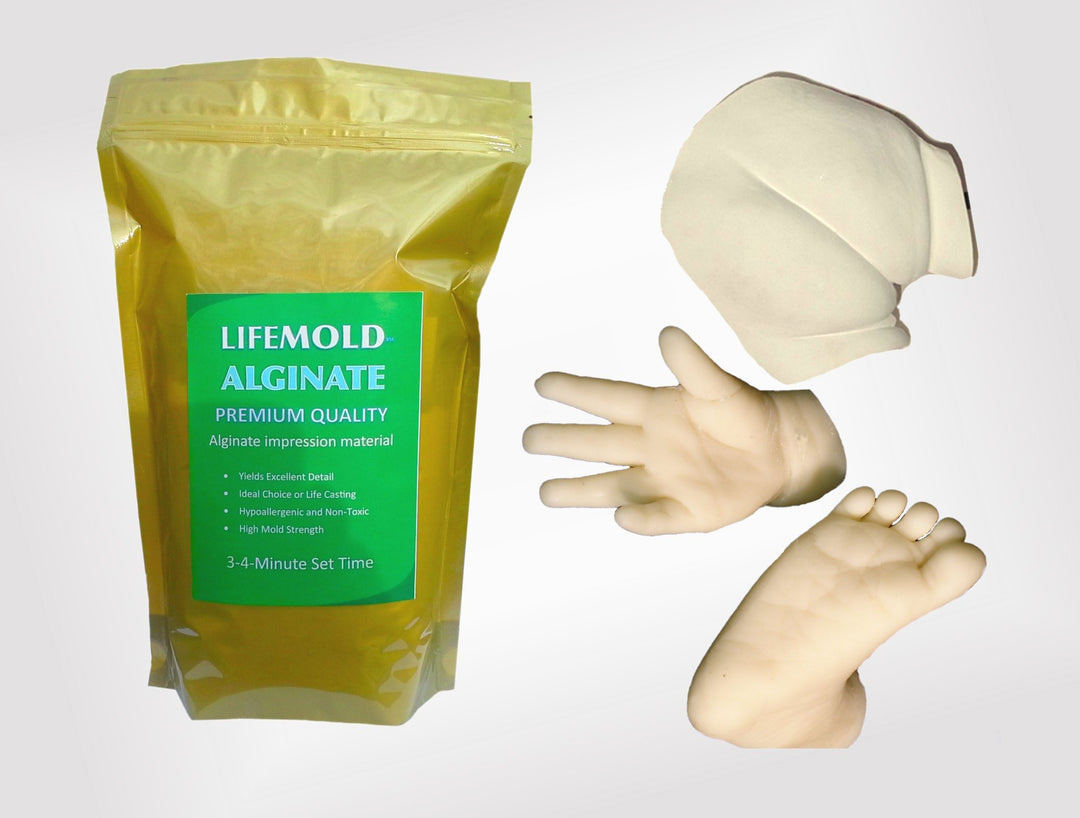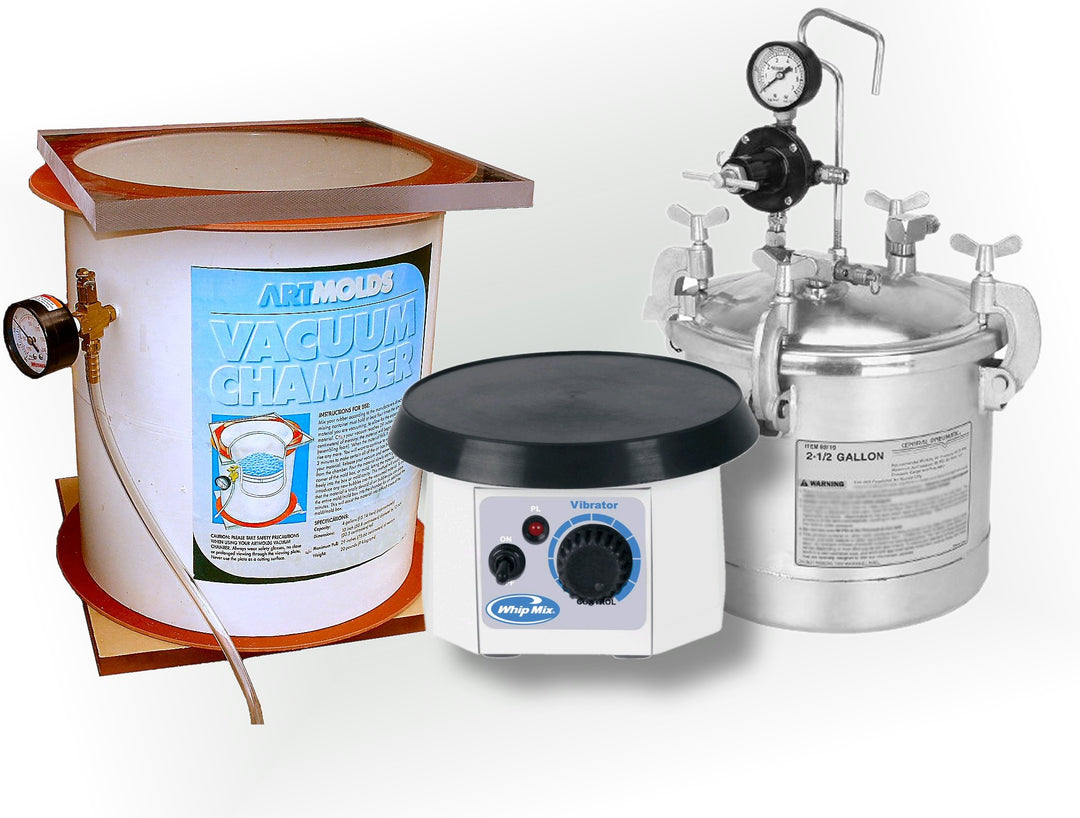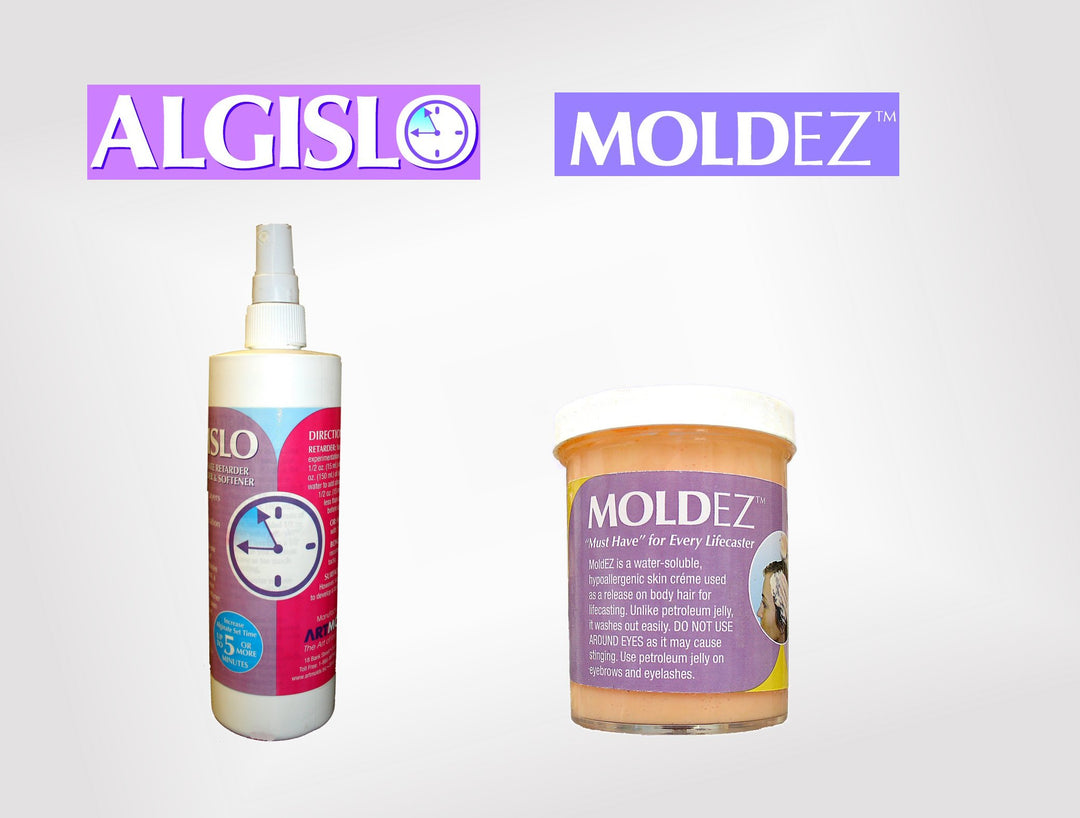Block Mold - Injection Type | Page 2 - ArtMolds

Figure 8
After the foam board wall is completed, small pieces of clay are placed inside where the foam board meets the clay parting line to seal the gap. If the gap isn't sealed, silicone will leak out. Clay the entire gap and then up the sides where the foam boards meet each of its sections

Figure 9

Figure 10
When the clay has been smoothed out to 90-degrees to the model's edge it is time to add the mold keys. The mold keys allow the two halves of the mold to register precisely when the mold halves are put together. For this purpose, we use "acorn" nuts embedded in the clay parting line about a half inch from each (Figure 8) other filling the entire clay surface.

Figure 11
It is time to mix the silicone material. In this example we are using MoldRite 25, a two part, addition cure silicone with a 10-to-1 mix ratio. We begin by placing an empty container on our gram scale and pouring out the base into it. The arrow points to the digital readout on the gram scale that the mold maker watches to determine the correct weight of the material.

Figure 12
Once the base is poured into the mixing container, we then add the catalyst to it. This is added at the rate of 1/10th of the gram weight of the poured base.

Figure 13
When the two parts are combined they must be mixed well, so that there is no marbling of the colors and there is one uniform color throughout.

Figure 14
The silicone mix is now put into a vacuum chamber for the de-airing process to remove the air bubbles. Air bubbles will cause mold deformations and unwanted cosmetic issues.






